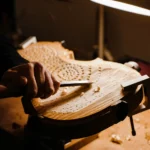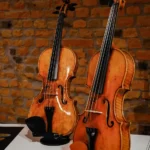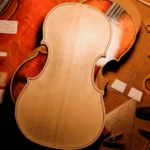Violin Bow Care: How Often to Replace Bow Hair?
Back to BlogViolin Bow Care
Have you struggled to achieve the same rich sound that made you fall in love with your instrument? If so, don’t worry—you’re not alone. Many new stringed instrument owners don’t realize that proper violin bow maintenance plays a crucial role in preserving the beautiful tone they expect from their instrument.
One way of getting this optimal performance is by asking yourself a simple question—“how often should I change my violin bow hair?”. If you just got curious then continue reading for tips on violin bow care.
Violin Bow Care: Hair Wear and Tear
Your bow is made from natural horse hair — which interacts with the strings of your violin and creates that warm and mellow sound. However, over time because of the friction, dirt as well as rosin buildup — it can reduce its effectiveness. Moreover, the frequency at which you use it to play can also have a direct impact on its condition and how long the hair remains in good condition. This is why it is really important to know when to replace it to make sure that you get the best sound and response from your instrument.
Factors That Influence Bow Hair Longevity
There are a few different reasons that can aid in figuring out how often you should rehair your bow. Here are a few examples:
- Playing Frequency: If you play several hours a day — it can quickly wear out your bow’s hair, compared to those who play their instruments occasionally. This happens because of the fact that — frequent use can lead to rosin buildup, stretching as well as hair breakage.
- Climate and Humidity: Dry climates can cause the hair in your bow to shrink and become brittle — whereas humidity can make it limp and unresponsive. Fluctuating conditions can also accelerate its wear.
- Hair Quality and Maintenance: high-quality horse hair can last longer — but still require regular maintenance. That is why it is important to store your bow in proper storage, keep it clean, and apply rosin application to further its lifespan.
- Playing Style and Technique: Those who use their bows aggressively or heavy-handed can put a lot of pressure on the hair — which can lead to faster degradation. This means that you can make sure to apply right pressure to your bow to help in its longevity.
Signs That Indicate the Need for a Bow Rehair
Even with the best care you can provide — your bow hair will need to have its hair replaced eventually. Moreover, if you are unsure about the condition of your bow — you can always ask for professional help from service providers like Amorim Fine Violins. Here are a few common signs that can help you determine if it’s time to Rehair your bow.
- Loss of Grip and Response: If your bow starts to slip on the strings even when you’ve applied rosin applications. This is a likely sign that its hair has worn out and has lost its ability to grip effectively.
- Uneven or Excessive Hair Loss: As you continue to use your bow – eventually it will result in hair breaks. Leading to uneven spread of hair across the bow. Moreover, if too much hair is missing, it can also affect the balance and tone of your instrument.
- Dirt and Rosin Buildup: Even though regular cleaning can help — your bow hair will eventually absorb rosin and dirt that is beyond repair. This can then diminish the sound clarity of your instrument.
- Frayed or Stretched Hair: If your bow appears frizzy, stretched, or even discolored — it is a sign that your bow is past its prime. Because – loose hair can’t create the right tension and can affect playability.
Recommended Rehairing Intervals
There is no actual recommended time period for when to rehair your bow — but there are some general guidelines that are catered to different types of violinists.
- Professional Players: Every 3 to 6 months because of their intense use.
- Serious Students and Advanced Amateurs: Every 6 to 12 months.
- Casual Players: Every 1 to 2 years, depending on how often they play their instrument and take care of it.
Violin Bow Care
Regularly maintaining your bow can help in making sure that your violin provides its optimal performance. However, to keep it at its peak condition, it is important to know all the signs that come from a worn-out bow and when it’s time to get your bow rehaired. Also, if you are still unsure of the process — you can visit Amorim Fine Violins for a better and much more detailed guide as well as a catered solution.









